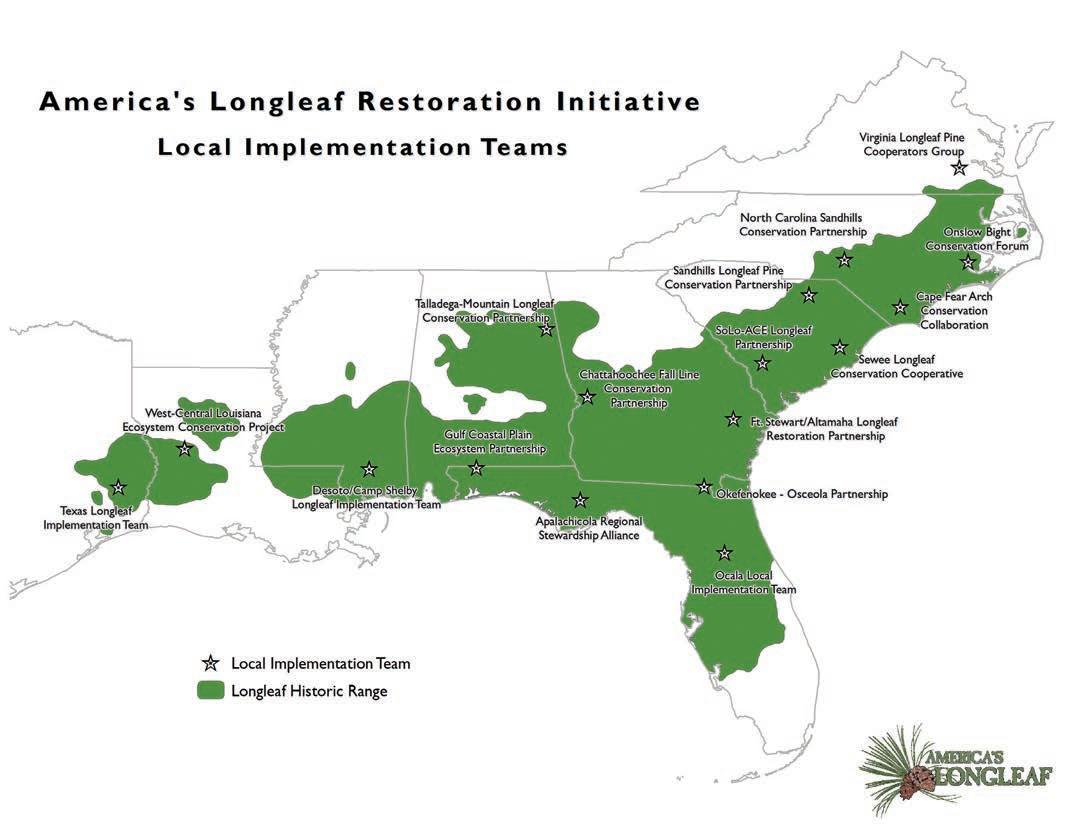
1 minute read
NEXT GENERATION
By Sarah Crate, The Longleaf Alliance
Slicing the Pie: The Past Helps Us Understand the Present and Plan for the Future Historically, longleaf pine ecosystems dominated the Southeast, stretching from Eastern Texas to Southern Virginia. Once covering over 90 million acres, only 3 million acres remained by the early 1990s. While the staggering decline is a familiar story to longleaf supporters, how well do these abstract numbers resonate? And why does the loss of longleaf habitat matter? Perhaps we can find new ways to tell the same story.
Advertisement
s
s

s


s

Imagine the historic 90 million acres of longleaf pines as a yummy PIE.
As representatives of the diverse plants and animals calling longleaf home, we all get a slice of the “longleaf” pie. Over time, the pie was eaten—the longleaf habitat was lost to conversion to non-forest uses, replacement by other tree species, and exclusion of frequent fire from the landscape. Without enough “pie” to go around, the loss of longleaf pine resulted in the decline of many plants and animals requiring longleaf and its associated habitats. •Removal of pie slices signifies lost longleaf acres due to over harvesting, feral hog rooting, land development, fire suppression, etc. •By 1970, < 6 million acres remained. •By 1990, only pie crumbs (3 million acres) remained. •Today, many species in longleaf habitats are considered at-risk of extinction.
“Slice of the pie” is an extension activity for The Longleaf Alliance’s “Learning with Longleaf” curriculum. The first lesson in the series begins by describing the historical vastness of longleaf pine in the Southeast and its subsequent decline.
Don’t have pie? Use board game money to demonstrate longleaf decline. Start with $90, evenly sharing the bills with everyone in the group. Take the money back, citing reasons for longleaf losses, until only $3 remain. — tip courtesy of Colleen Bower, Carver Creek State Park Superintendent, NC State Parks











